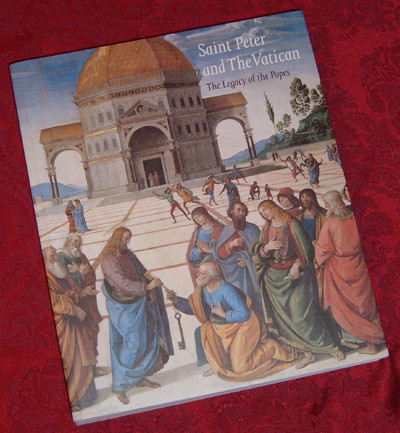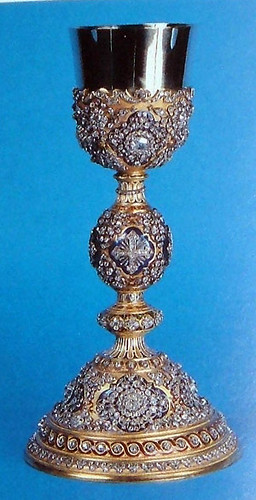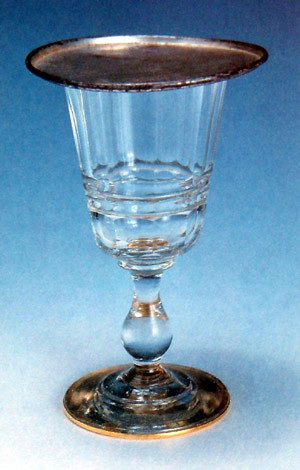
Catalog is something of a misnomer. It's lavishly illustrated, and exhaustive in its nearly encyclopedic discussions of the objects on display--their historical, theological and liturgical context. It's like National Geographic on steroids. It contains answers to all the questions I had during the exhibit, and many more I hadn't even considered.
There were many, many displays that were moving, overwhelming or just plain dazzling. The recreation of the "Street of Tombs" beneath St. Peter's Basilica leading to St. Peter's tomb is interesting in and of itself, but it isn't given context until after the fact, at which point it becomes much more impressive. The well-publicized "Mandylion of Edessa," the oldest-known painting of Christ created sometime between the third and fifth centuries is powerful in its simplicity as well as its age. The life-size mockup of Michaelangelo's workspace atop the Sistine Chapel wasn't as impressive as I'd anticipated for some reason, but it was intriguing in that it showed some of the processes and techinques the master had used to transfer his vision to the frescoes of the ceiling.
Of course, when people think of the Vatican, the first thing that often comes to mind is opulent wealth. And there was bonafied treasure on display, make no mistake. Thanks to the chalice of Pope Pius IX (below, scanned from the catalog above) I now know what "jewel-encrusted" truly means:

A gift from Sultan Absul Medji to Pope Pius IX in 1846, it is incredibly dazzling in person. Gold with green, blue and red enamel along with a thousand diamonds, it flashes and sparkles like a living thing in even the subdued light of the exhibit space. It is a beautiful and marvelous example of excess. It was used by Pope Benedict XVI during his first mass after election as pope. As overwhelming as that chalice was, it paled in comparison to this one:

The goblet is simple, plain glass, and the plate atop it is the lid from a tin can. But these simple artifacts were used by priests to celebrate mass while imprisoned in Auschwitz during World War II. After the camp's liberation, the survivors presented them to Pope Paul IV, who gilded the foot of the cup with gold, added an inscription, and placed them in the Treasury of the Papal Sacristy.
The tour began in Montreal last June and after it closes in San Antonio, will wrap up its North American run in Milwaukee from February to May.
Now Playing: Emerson, Lake and Palmer Return of the Manticore

No comments:
Post a Comment